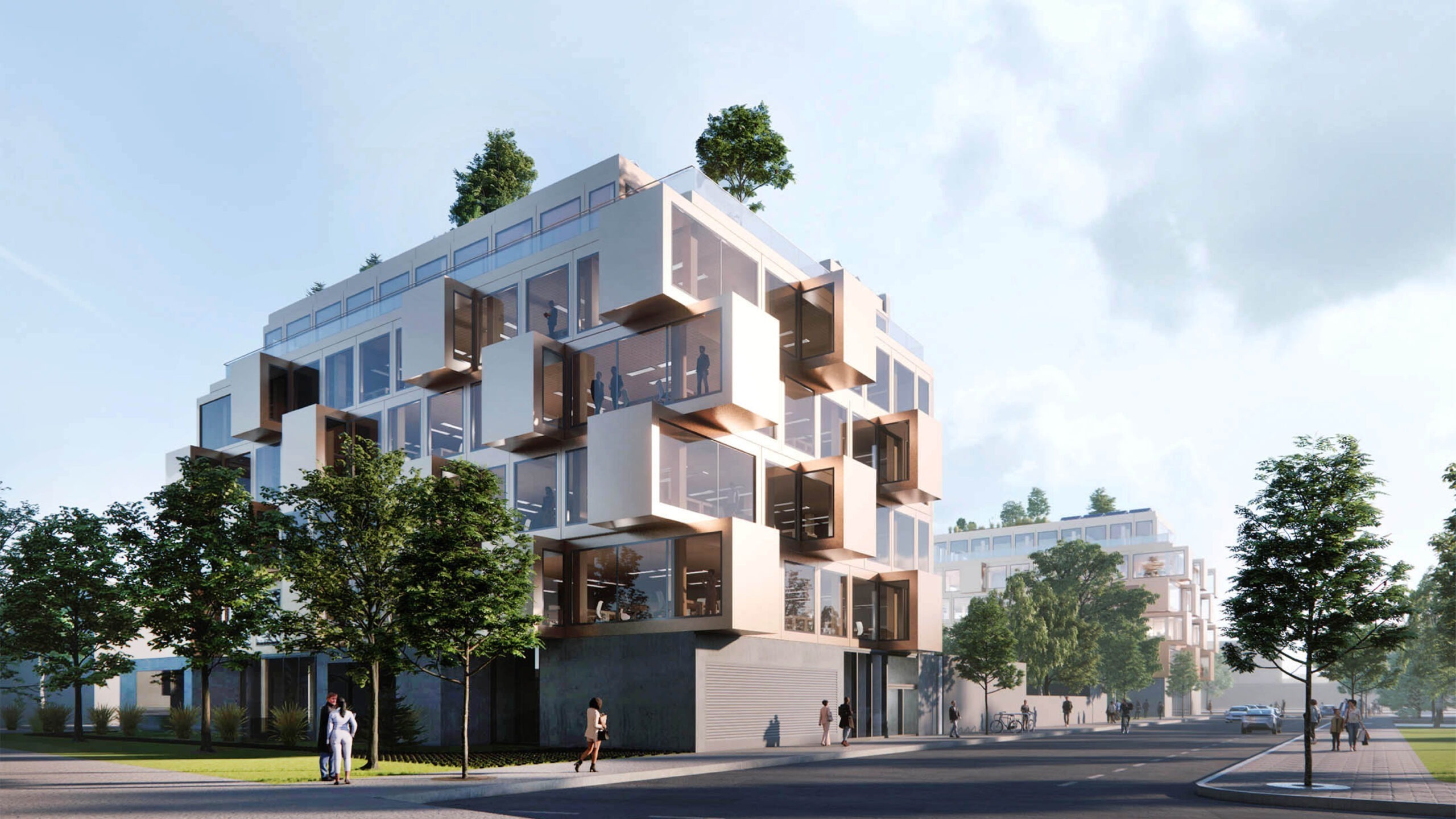Two Buildings, Endless Possibilities in Berlin-Friedrichshain: Where Hospitality Meets Workspace.
In the run-up to the planning for this twin project in Berlin-Friedrichshain, we worked with GRAFT Architects and Bene to find answers to the questions that everyone has been asking themselves: How do we want to work in the future, and how must office spaces be built and designed so that people like to spend time there?
Three key answers can be found at LYNX. Just like everything in life, it is a snapshot in time, which is why the first answer is particularly important:
1 | Everything we build today must also be usable in a different way in the future. Our world is changing faster than ever before. Buildings and workspaces must be adaptable to the greatest possible degree.
2 | We need workspaces in which we enjoy coming together as a team and as humans, and in which we can be creative and productive. No conference technology in the world can replace the energy and power of innovation that lie within genuine human interaction.
3 | There is no alternative to resource-efficient architecture. The environmental innovation of today will become the standard faster than ever before.

Here, companies will find flexible spaces their teams need for everyday work: collaboration, exchange, and retreat at LYNX WORK, as well as overnight stays, relaxation, and community at LYNX STAY.
Laskerstraße was named in 1910 after the Jewish jurist, writer, and politician Eduard Lasker (1829-84). The property at Laskerstraße 1/Markgrafendamm 25 belonged to the merchant Leo Cohn, who had a residential and commercial building constructed here in 1914. The users of the business premises included the “Vietz-Verkehrsreklame” company and, in 1932, the “Gerüstverleih Otto Müller”, the “Farbenhandlung Karl Rossins,” and Max Ruchs “Grünkramhandlung”.
During World War II, the urban area between Warschauer Strasse and the eastern S-Bahn ring contained an extensive rail network, and it was the target of Allied air raids. As a result, most of the buildings and plants were destroyed or severely damaged. The residential and commercial building on the property at Laskerstraße 1/Markgrafendamm 25 was also affected, and the ruins were demolished around 1950. The research was done by berlinHistory e.V..
You can read about how the history of this part of the city continued in the app: berlinhistory.app
Our longtime partners: GRAFT – a studio for architecture, urban planning, design, music, and the pursuit of happiness.
“We believe in the power of architecture as a tool, best employed not for its own sake, but to represent ambiguous and diverse identities.”
